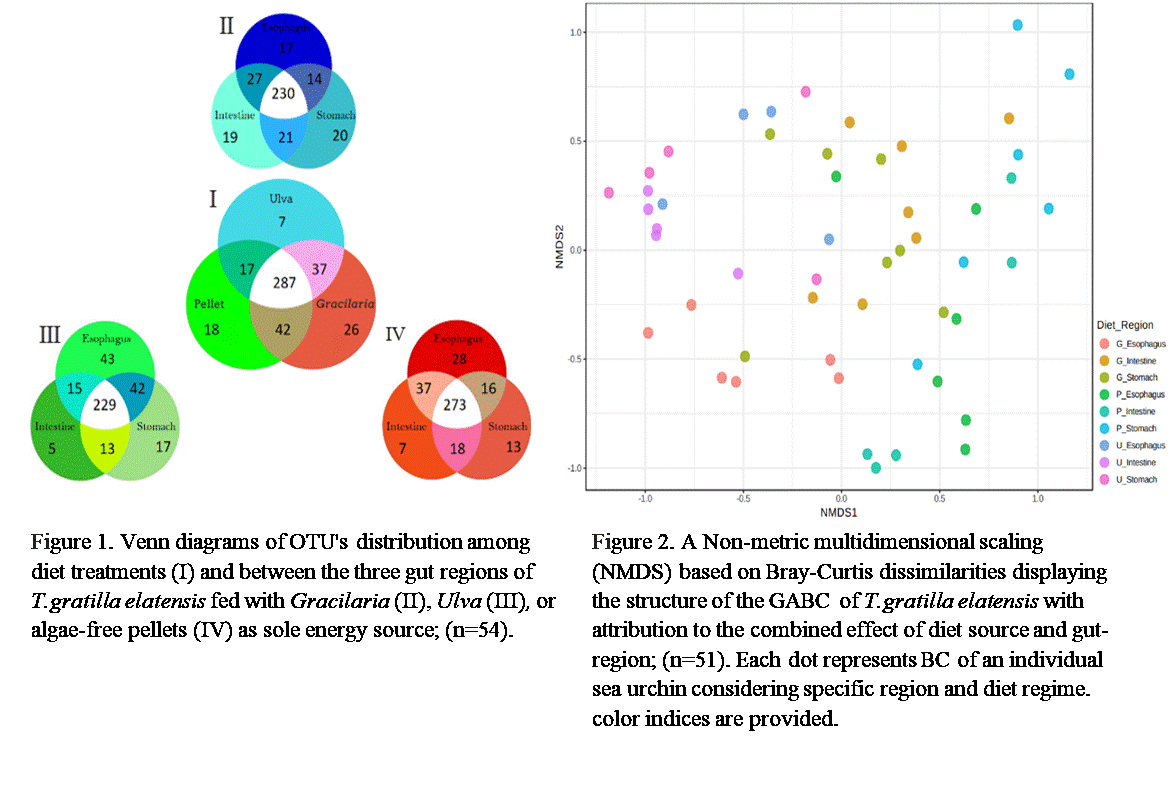
Spatial differences in the bacterial community along the digestive tract of sea urchin Tripneustes gratilla elatensis: a role of seaweed diet
2Biotechnology Engineering, Ben-Gurion University of the Negev, Beer-Sheva, Israel
3National Center for Mariculture, Oceanographic and Limnological Research, Eilat, Israel
Sea urchins play a crucial role in recycling nutrients throughout the food-web in marine ecosystem. Seaweeds Ulva sp. and Gracillaria sp. are common feed in diet of the collector sea urchin T. gratilla elatensis, in its natural habitat in the Gulf of Aqaba as well as in mariculture systems. The Gut-Associated Bacterial Community (GABC) of this organism may play primary role in seaweeds digestion, particularly in decomposition of dietary fibers which are highly common in both Ulva and Gracilaria (between 40-50% of dry biomass) but at different content and composition.
In current research, high throughput sequencing was performed to characterize the GABC in different segments along digestive tract of T.gratilla elatensis when fed with a sole energy source of Ulva sp., Gracillaria sp. or algae- free pellets.
66% of the total OTU`s were shared between samples of different diets while a relatively similar portion of OTU`s were shared between samples of different gut region (Figure 1). Beta diversity index revealed a greater impact of diet source than that of gut region toward dissimilarity between bacterial communities (Figure 2). Members of bacterial phyla Proteobacteria, Bacteroidetes, Tenericutes, Firmicutes, Spirochaetaes and Planctomycetes dominated all samples while prevalence of Firmicutes, Fusobacteria and Cyanobacteria increased significantly in digestive tract of Ulva- fed sea urchins. A Linear discriminant analysis Effect Size (LEfSe) indicated 19 genera as bacterial biomarkers for Gracilaria- fed sea urchins, 13 for Ulva- fed sea urchins and 19 for sea urchins fed with algal- free diet. According results, we suggest a combined effect of diet source and gut-region on GABC composition and diversity.

Powered by Eventact EMS